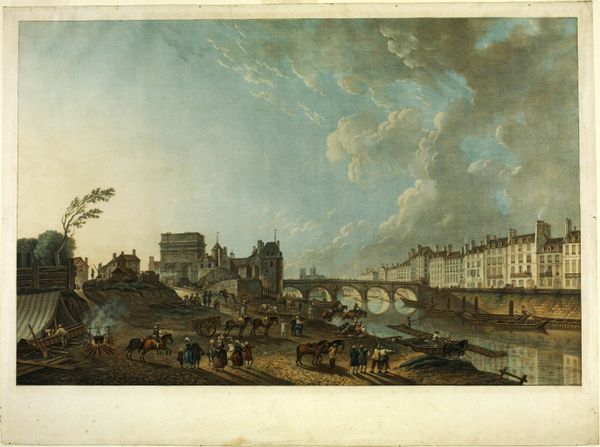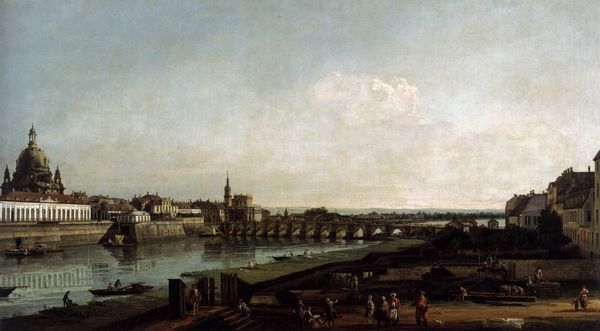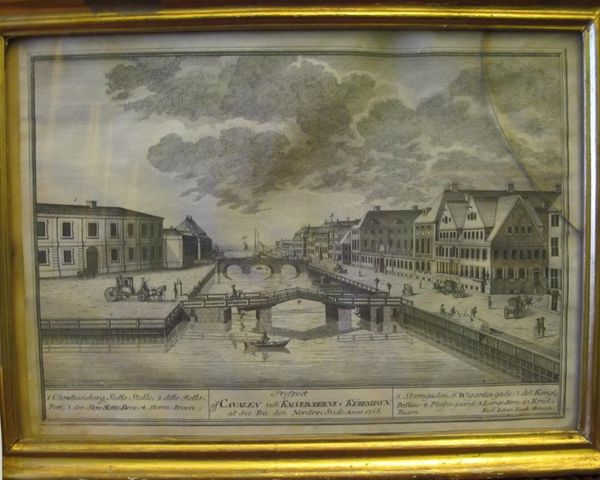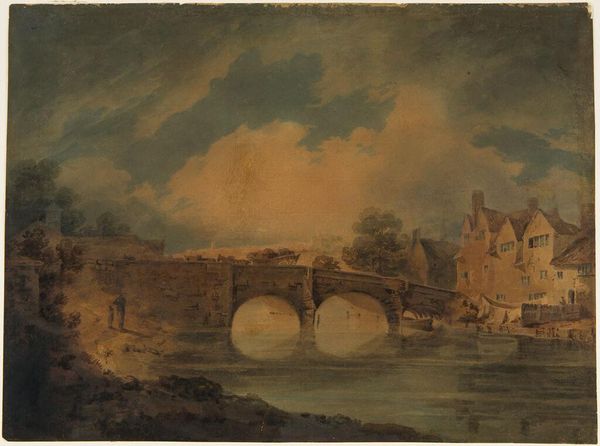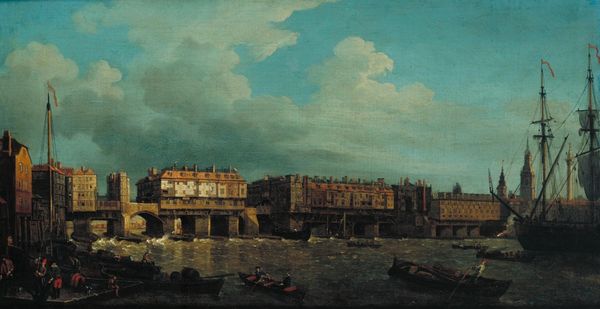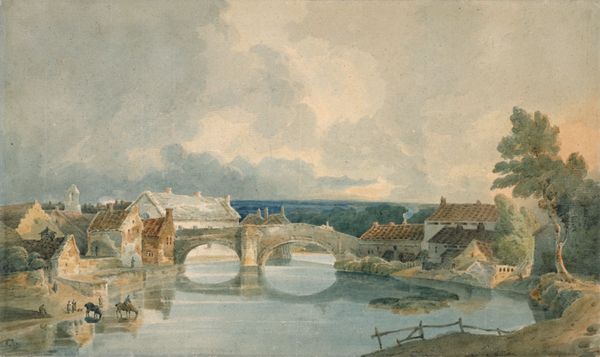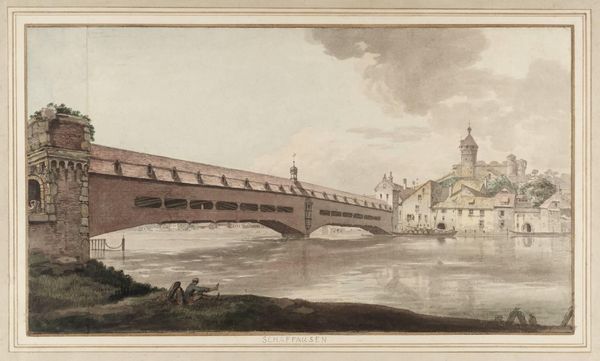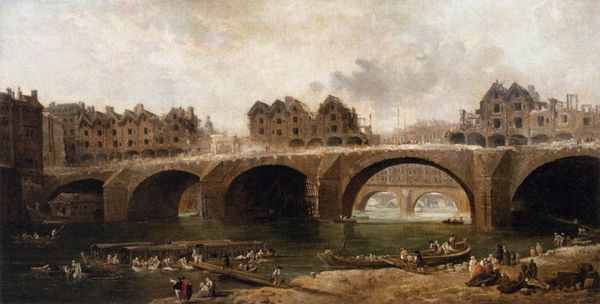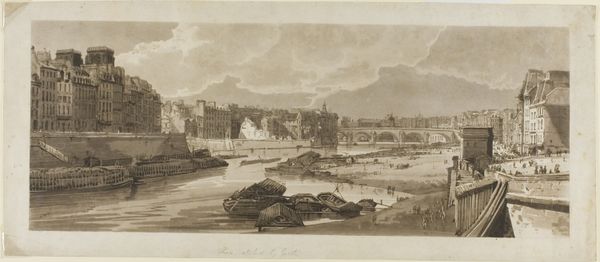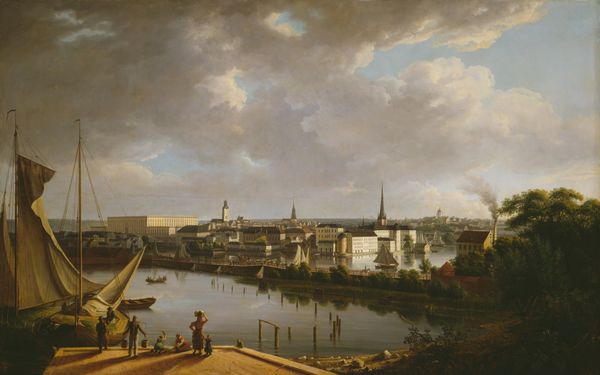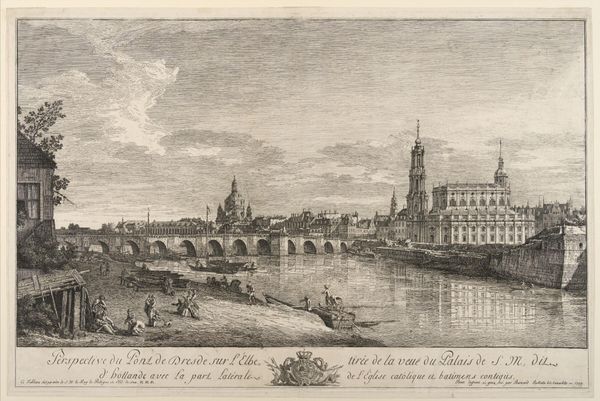
painting, oil-paint
#
neoclacissism
#
painting
#
oil-paint
#
landscape
#
oil painting
#
water
#
cityscape
#
realism
Copyright: Public domain
Curator: "Parti Af Frederiksholms Kanal," painted by Christian August Lorentzen in 1794. It’s oil on canvas, and depicts a canal scene. What catches your eye initially? Editor: Well, there's a pervasive calmness. The soft color palette, dominated by muted blues and browns, creates this serene atmosphere. The rigid architectural forms of the buildings seem to balance the openness of the sky, creating a tranquil order. Curator: Indeed. Lorentzen painted this during a turbulent time in Europe, with the French Revolution casting a long shadow. Think about Copenhagen then: a hub of trade and power, deeply implicated in global dynamics of colonialism and class. Editor: How might that context be visually evident? I’m struggling to see overt signs of social or political upheaval here. It all seems very contained. Curator: Consider the canal itself. It's not merely a picturesque element; it's a channel for commerce, a facilitator of empire. The figures on horseback could represent the merchant class, their wealth directly tied to these global flows. Editor: I can appreciate that read. But look at how the brushstrokes themselves delineate space. The buildings’ facades show meticulous detail, while the sky is just this diffused gradient. The rigid lines almost impose a sense of rational control, no? Curator: The rigidity certainly speaks to Neoclassical ideals of order and reason, and these canals facilitated the movement of goods. But that "rational control" was built on exploitation and uneven distribution. We should question whose "order" is being represented. Editor: Perhaps, but from a purely formal perspective, Lorentzen has managed to create depth. Your eyes track from the darker foreground to the shimmering horizon, the placement of the bridges acts as vanishing points drawing the gaze further back, very compelling. Curator: Absolutely. Art is not divorced from politics or economy. Lorentzen's skillful rendering invites us to consider not just the aesthetic qualities of the work but the complex social realities of its time. Editor: Fair point. Thinking of it now I see how Lorentzen balances what appears a beautiful and calming piece with a deep current that speaks to power. Curator: Exactly. It reveals so much about that period, its hopes, anxieties, and inequalities, I am now so glad to see things from your angle as well.
Comments
No comments
Be the first to comment and join the conversation on the ultimate creative platform.
